Bringing your liquids through airport security is not always as straightforward as you might think.
There are several rules that apply when bringing your liquids through airport security checkpoints and, yes, many are obvious to those of us blessed with a shred of common sense.
But in some cases there are some less obvious restrictions that could apply to your liquids.
And when you start talking about things like baby essentials, medications, and liquids like alcohol, there are many lesser-known rules and exceptions that come into play.
Violating these rules can sometimes mean slowing down the flow of the screening checkpoint (something we all should want to avoid) but in other cases it could mean violating the law and you basically becoming an airport criminal.
And nobody wants that.
So it’s a good idea to get acquainted with how these rules work and in this article, I’ll give you a detailed breakdown of the 3-1-1 rule and also talk about the many different types of exceptions and additional rules that apply to different types of liquids such as medications and alcohol.
Table of Contents
What is the TSA Liquids “3-1-1 Rule?”
The TSA Liquids 3-1-1 Rule states that you can only bring liquids in containers no larger than 3.4 liquid ounces (100 milliliters) and that all of your liquid containers must fit “comfortably” into one clear, quart-size bag.
Where does the 3-1-1 come from?
It’s just an easy way to memorize the different requirements that make up the rule and I’ll hit on those below.
3.4 fluid ounces or (100 mL)
The “three” indicates that your liquids must be contained within a container no larger than 3.4 fluid ounces or (100 ml).
(TSA uses 3.4 ounces because it’s easier to remember but really 100 ml comes out to 3.3814 fluid ounces.)
One of the biggest things that people get confused about is that the 3.4 ounce requirement applies to the size of the container and not the liquid within the container.
So let’s say that you have a 6 ounce container with only 2 ounces of fluid inside.
You may think that because you have under 3.4 fluid ounces of liquid, you are good to go but because your container is larger than 3.4 ounces, you cannot bring that through TSA.
The other big thing to know is that this refers to fluid ounces which relates to volume and is very different from ounces used for weight.
Some products like honey could weigh 4 ounces but still fit inside of a 3.4 fluid ounce container. It helps to know how to convert ounces/grams to fluid ounces.
Tip: Use the free app WalletFlo to help you travel the world for free by finding the best travel credit cards and promotions!
1 quart-sized resealable bag
The first “one” means that your liquids must fit within 1 quart-sized resealable bag. Typically, this will be a clear Ziploc bag which just makes things easy for everybody.
The key thing to note here is that the containers must fit “comfortably” inside this resealable bag.
What does “comfortably” mean?
It basically just means that the bag is not bursting at the seams. (Think about how a pair of jeans should fit when you’re being honest with yourself about your waist size.)
If you are not able to easily reseal your bag, then your contents may not be fitting comfortably inside.
In such a scenario, it’s possible that a TSA agent could ask you to throw something out in order to allow your bag to comply with the rules.
In my personal experience, I have not seen a lot of TSA agents enforce the “comfortable” requirement very strictly but if you have bottles poking out of your liquids bag, I could see that being an issue.
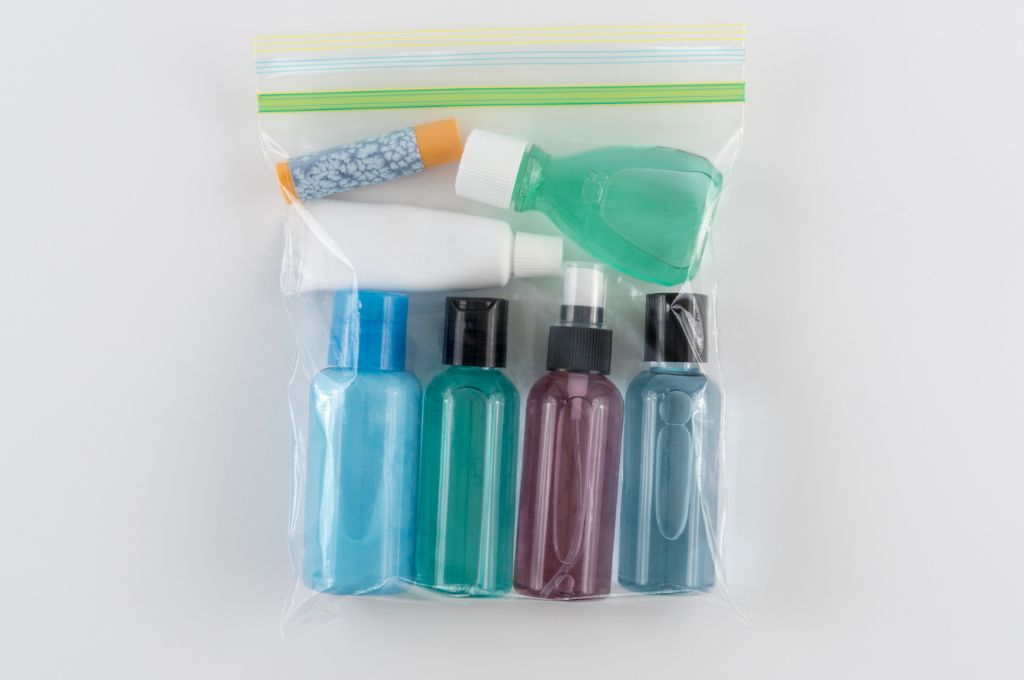
1 quart size bag per person
The last requirement is that you are allowed 1 quart size bag per person.
The easiest way to comply with this is to simply separate your liquids bag from your carry-on and have one liquids bag in your bin when going through security.
Otherwise, it could look like you are trying to bring through two bags of liquids.
The best packing tip I have for this is to keep your liquids bag at the top of your carry-on so that you can easily retrieve it.
There’s nothing worse than scrambling to find that liquids bag while trying to get ready to go through a screening checkpoint.

TSA Pre-Check liquids rule
TSA Pre-Check allows you to bypass the main security line and pass through a screening line that is usually much shorter and quicker. This also means avoiding the full body scanner in many cases. It basically makes you a VIP when it comes to airport security checkpoints.
If you have TSA Pre-Check, you can take advantage of several benefits including things like:
- Shoes can stay on
- Belt can stay on
- Light jackets can stay on
- Laptops allowed to stay in bag
- Liquids (3-1-1) can stay in bag
That last perk is the most relevant to the liquids rule as you will not have to remove your liquids bag and place them in one of the bins when going through security. You can simply leave them in your carry-on and pass through the metal detector without any issue.
I highly recommend that you look into getting Pre-Check in order to expedite your security screening. It will only cost $78 for five years and all you have to do is pass a background check. You can also get it if you are approved for Global Entry (read how to get approved here).
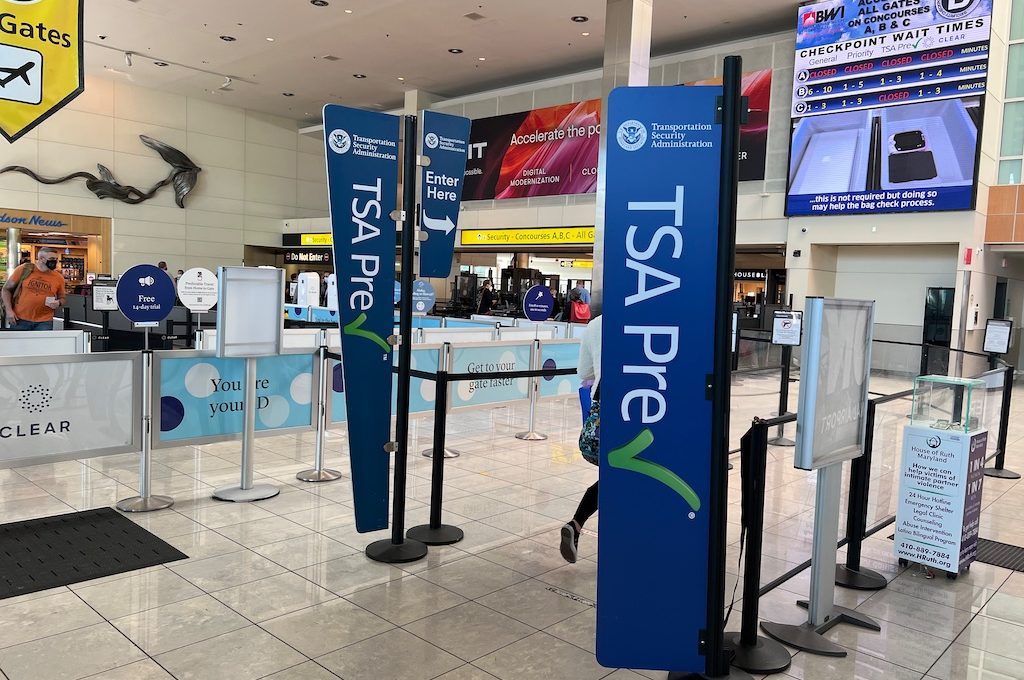
New liquids rules?
Due to the ongoing threat of coronavirus and the potential threat of spreading germs throughout airports and aircraft, TSA allowed passengers to bring one hand sanitizer bottle up to 12 ounces. This no longer seems to be permitted!
There’s also talk that TSA will allow larger liquid bottles up to 2 liters as advanced scanning technology is deployedd. However, that does not appear likely until sometime around 2040!
What exactly is a “liquid?”
In some cases, what constitutes a liquid will be very clear.
For example, it’s pretty much common sense that water inside of a water bottle is a liquid. The same applies for cologne, mouthwash, etc.
But liquids also can include less-obvious forms like aerosols, gels, creams, or pastes.
This means that several common items you would be bringing along for your trip could be considered a liquid like: toothpaste, lotion, sunscreen, shaving cream, shampoo, conditioner, and others.
You can find travel-sized products for most of these so it’s usually pretty easy to bring along items that comply with the TSA liquids rule.
Other items
You need to be mindful of other items that could be considered liquids like deodorant. For example, the following types of deodorants will be subject to the 3-1-1 rule:
- Spray
- Gel
- Liquid
- Cream
- Pastes
- and Roll-On deodorants
Prohibited items
Just because you have something like an aerosol and it is in a container no larger than 3.4 ounces, that does not mean that you can bring it as a carry-on.
There are quite a few prohibited items like aerosol insecticide, bear spray, etc. that are not allowed as carry-ons. In fact, some of those items may not even be allowed on the plane at all. This is a good place to search if you are in doubt about whether or not you can bring a particular item.
Be aware that some items like hairspray may even have size restrictions when packed in your checked baggage.
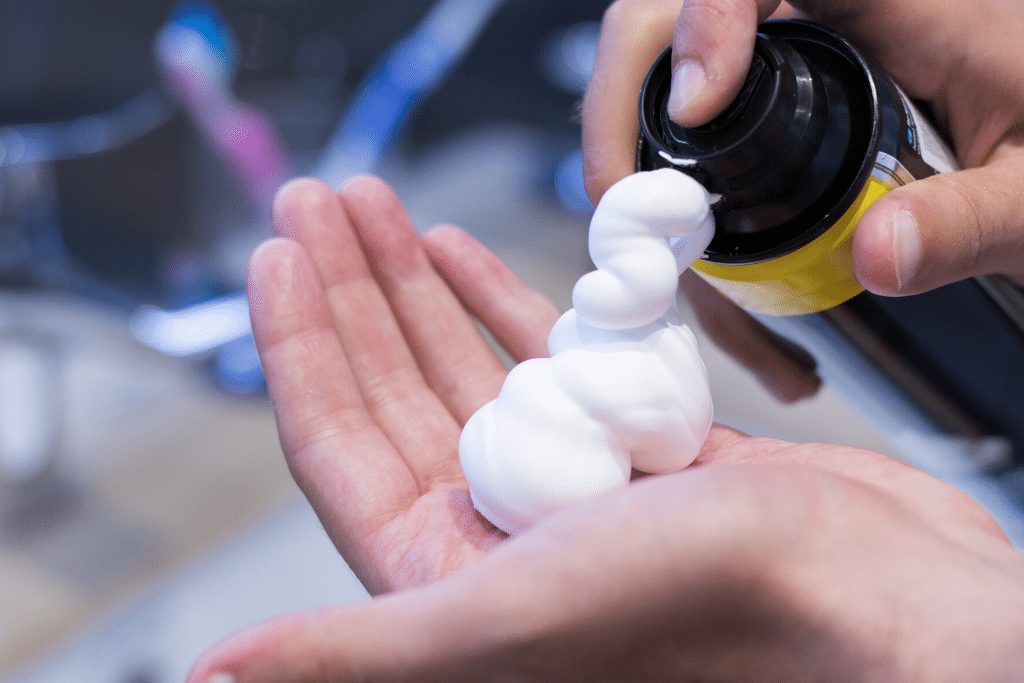
Foods can also be liquids
One aspect of the TSA liquids rule that throws a lot of people off is that they forget many foods also qualify as liquids.
Here is a non-exhaustive list of food items that will fall under the liquids rule:
- Liquid chocolate
- Creamy dips and spreads
- Mashed fruits such as applesauce
- Gravy
- Honey
- Jam and jelly
- Maple syrup
- Oils and vinegars
- Peanut butter
- Wet pet food
- Salad dressing
- Salsa and sauces
- Soups
- Yogurt
Basically anything that is usually poured, scooped, squeezed, slurped, or mashed will be considered a liquid for TSA purposes.
If your food is solid on the other hand, chances are you can bring it through.

TSA rules for liquid medications
The liquids rule provides exceptions for medical supplies and medications.
TSA allows larger amounts of medically necessary liquids, gels, and aerosols in “reasonable quantities” than your 3-1-1 allowance.
You do not have to have a prescription for these items but keep in mind that you need to comply with state laws regarding prescriptions and controlled substances.
This leaves two questions often to be asked and answered.
The first is what is considered “medically necessary?”
For example, is contact lens solution medically necessary?
It seems the answer to that is probably yes given the TSA states, they allow “larger amounts of medically necessary liquids, gels, and aerosols in reasonable quantities for your trip” on the page regarding contact lenses.
So if in doubt check the website and then inquire with AskTSA if you still don’t know.
The second question is what is considered a “reasonable quantity?”
What is deemed as a reasonable quantity is a subjective determination.
According to the TSA, you should bring what’s necessary for the duration of your trip (e.g., seven days) plus a day or two just in case things get delayed or canceled.
If you stick to what you think will be necessary for the duration of your trip, I don’t think you will often run into trouble. But if you’re bringing a six month supply of medication on a four day getaway, that’s when you might start to run into trouble if questioned.
TSA states that you must declare them to TSA officers at the checkpoint for inspection.
You also want to remove these from your carry-on so that they can be screened separately from your belongings. (You do not have to put your liquid medication in a plastic Ziploc bag.)
Just be aware that if one of your liquid items declared as medically necessary sets off the alarm, it may require additional screening and may not be allowed.
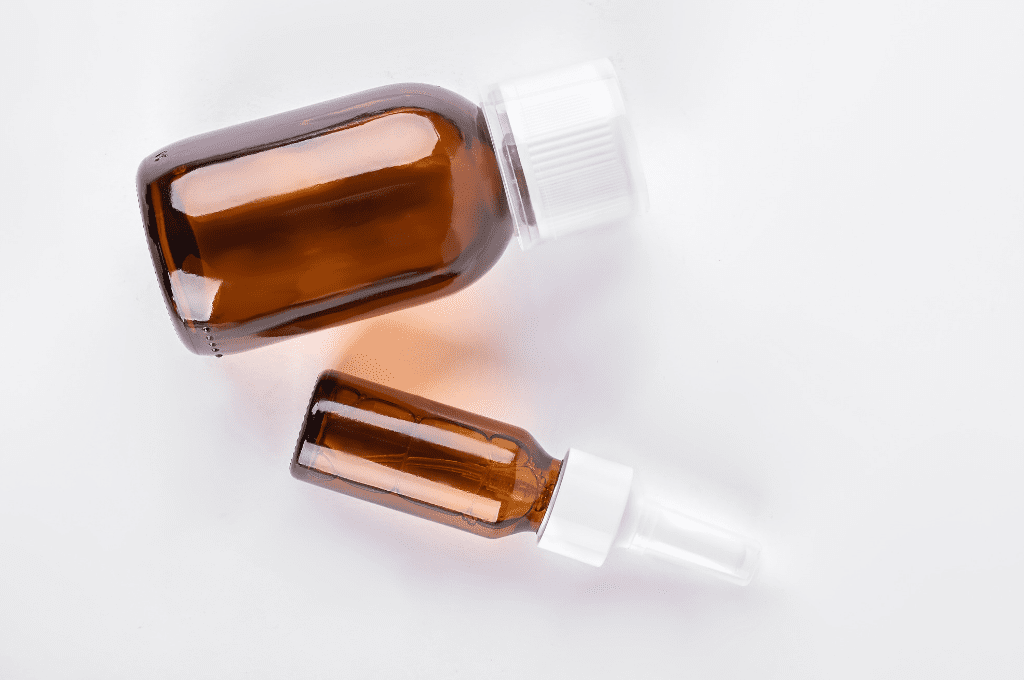
Baby essentials
You are allowed to bring formula, breastmilk, and juice for infants or toddlers in “reasonable quantities” through airport security. According to the TSA, reasonable quantities for baby essentials typically means the duration of the flight.
When bringing these items through security, be sure to separate these from your carry-on bag so that they can be screened separately from the rest of your items.
If you are carrying liquids in excess of 3.4 ounces, you are advised to inform the TSA officer at the beginning of the screening process that you have excess liquids. You can do this when you are unloading your items into the bin.
In many cases, excess liquids will be screened by x-ray.
It’s also possible that an officer may ask you to open up the container and potentially even transfer a small quantity of the liquid for testing.
If you are worried about the effects of an x-ray machine on your liquids, The Food and Drug Administration states that there are no known adverse effects from eating food, drinking beverages and using medicine screened by X-ray.
If that is not good enough assurance for you, you can ask to avoid the x-ray machine.
Additional steps may be able to be taken to clear the liquid but the traveler will likely have to undergo additional screening procedures which could include a pat down and a thorough screening of all of your carry-on property.
You will also be allowed to bring along ice packs, freezer packs, frozen gel packs and other accessories required to cool formula, breast milk and juice.
If these are in a partially frozen state or perhaps appear like a slushy they will be subject to the same screening as described above.
Other permitted baby items include gel or liquid-filled teethers, canned, jarred and processed baby food.
Just always be aware that these items may have to undergo additional screening.
Tip: Use the free app WalletFlo to help you travel the world for free by finding the best travel credit cards and promotions!
TSA liquid rules for alcohol
Bringing alcohol through TSA presents a number of different challenges.
First, your alcohol in most cases will have to comply with the liquids 3-1-1 rule. This means that you won’t be able to bring in regular bottles of liquor or beer.
It is possible to find small bottles that are under 3.4 ounces (mini-liquor bottles are often around 1.7 ounces, so this means that they are small enough to be brought on the plane as a liquid).
But contrary to what many people think, it’s also permitted to bring your own alcohol in one of your own containers.
The catch is that there are specific restrictions about what type of alcohol is allowed on board and that can be allowed as a carry-on. You really need to make sure that you are abiding by these rules because you could be violating federal law otherwise.
The first regulation to know is that alcohol beverages with an alcoholic percentage above 70% (140 proof) is never allowed on the plane. In fact, alcohol with such a high alcohol percentage is considered a hazardous material.
If the alcohol content is above 24% but not above 70% then the alcoholic beverage must be in its retail packaging. A lot of popular alcoholic beverages for within this range. Here are some ranges for the alcoholic content of some common beverages:
Alcohol Percentage Content
- Vodka | ABV: 40-95%
- Gin | ABV: 36-50%
- Rum | ABV: 36-50%
- Whiskey | ABV: 36-50%
- Tequila | ABV: 50-51%
- Liqueurs | ABV: 15%
- Fortified Wine | ABV: 16-24%
- Unfortified Wine | ABV: 14-16%
- Beer | ABV: 4-8%
- Malt Beverage | ABV: 15%
And finally, one of the most important things to remember is that you are not allowed to serve yourself your own alcohol when flying.
Instead, you must request a flight attendant to serve you the alcohol or else you will be violating FAA regulations. Some flight attendants will happily serve you your own beverage but others will not be so inclined.
If you purchased alcohol at duty free store, different rules apply in that scenario. Basically, you can bring your duty free alcohol through TSA security but you have to comply with three separate requirements:
- The duty free liquids were purchased internationally and you are traveling to the United States with a connecting flight.
- The liquids are packed in a transparent, secure, tamper-evident bag by the retailer and do not show signs of tampering when presented to TSA for screening.
- The original receipt for the liquids is present and the purchase was made within 48 hours.
Read more about this rule here.

Checked baggage liquid rules
Many times, you can simply place your liquids in your checked baggage and not have to worry about that pesky 3-1-1 rule.
This is usually the way to go on longer trips when you might be bringing large quantities of things like shampoo or shaving cream.
But as mentioned above, you still need to make sure that the type of liquid is allowed on a plane. Certain materials may be considered hazardous and you could be violating the law by bringing those on board.
If you are loading up your checked baggage with a bunch of liquids, make sure that you double bag if there is potential for the liquids to spill!
TSA Liquid Rules FAQ
The TSA 3-1-1 rule does not apply to checked baggage. However, there are some restrictions on what liquids can be transported in your checked baggage. There may also be limitations on the quantity of liquids when it comes to importing large quantities of things like alcohol. At some point, you might have to obtain a license for certain goods.
TSA definitely enforces the liquids rule and I would recommend not trying to circumvent the rule. It’s possible that an agent may be more lenient than another in certain circumstances but I would always assume that an agent will be enforcing strictly so that I don’t run into any unexpected issues.
TSA has the rules in order to detect potential explosives and other harmful materials that exist in liquid state.
The same liquid rules apply for both domestic flights and international flights.
One difference that you might encounter is when you purchase duty free goods before an international flight. See the duty-free section above for more details.
Also, when flying internationally it is recommended that you get to the airport extra early. It is possible that you could get hit with SSSS and be forced to undergo a heightened security screening, so always plan out extra time.
While you might view your makeup as special, there are no special rules for your makeup when it comes to TSA. They must abide by the same 3-1-1 rule explained above. Read more about makeup rules here.
No, you do not have to take out your liquids if you have TSA Pre-Check.
The same TSA liquids rule will apply to all airlines. So if you’re flying American or Delta, the rules will be the same as if you were flying Southwest or United.
With that said, some airlines do have some differences in how they handle acceptable baggage so you should make sure to read up on the latest baggage policies for the airlines.
If you are traveling from an “international last-point-of-departure” to the U.S., powder-based substances in carry-on baggage greater than 350mL or 12 oz. may require additional screening. If your substance is over 12 ounces and cannot be cleared it will not be allowed onto the aircraft cabin.
TSA recommends that you transport powders in your checked baggage.
Final word
TSA has several rules you need to follow when it comes to drinking liquids through airport security. The most well-known is the 3-1-1 rule but there are other considerations you need to think about like foods that might trigger the rule and exceptions for medical and baby essentials. In the end, try to be as reasonable as possible with what you are bringing through and you will run into few problems.

Daniel Gillaspia is the Founder of UponArriving.com and the credit card app, WalletFlo. He is a former attorney turned travel expert covering destinations along with TSA, airline, and hotel policies. Since 2014, his content has been featured in publications such as National Geographic, Smithsonian Magazine, and CNBC. Read my bio.

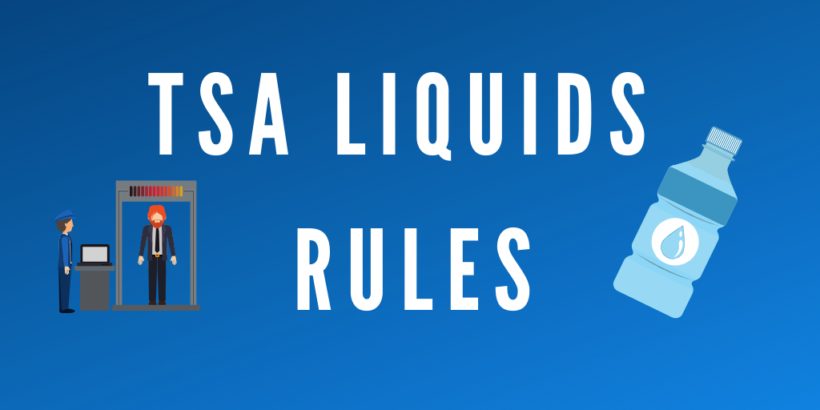
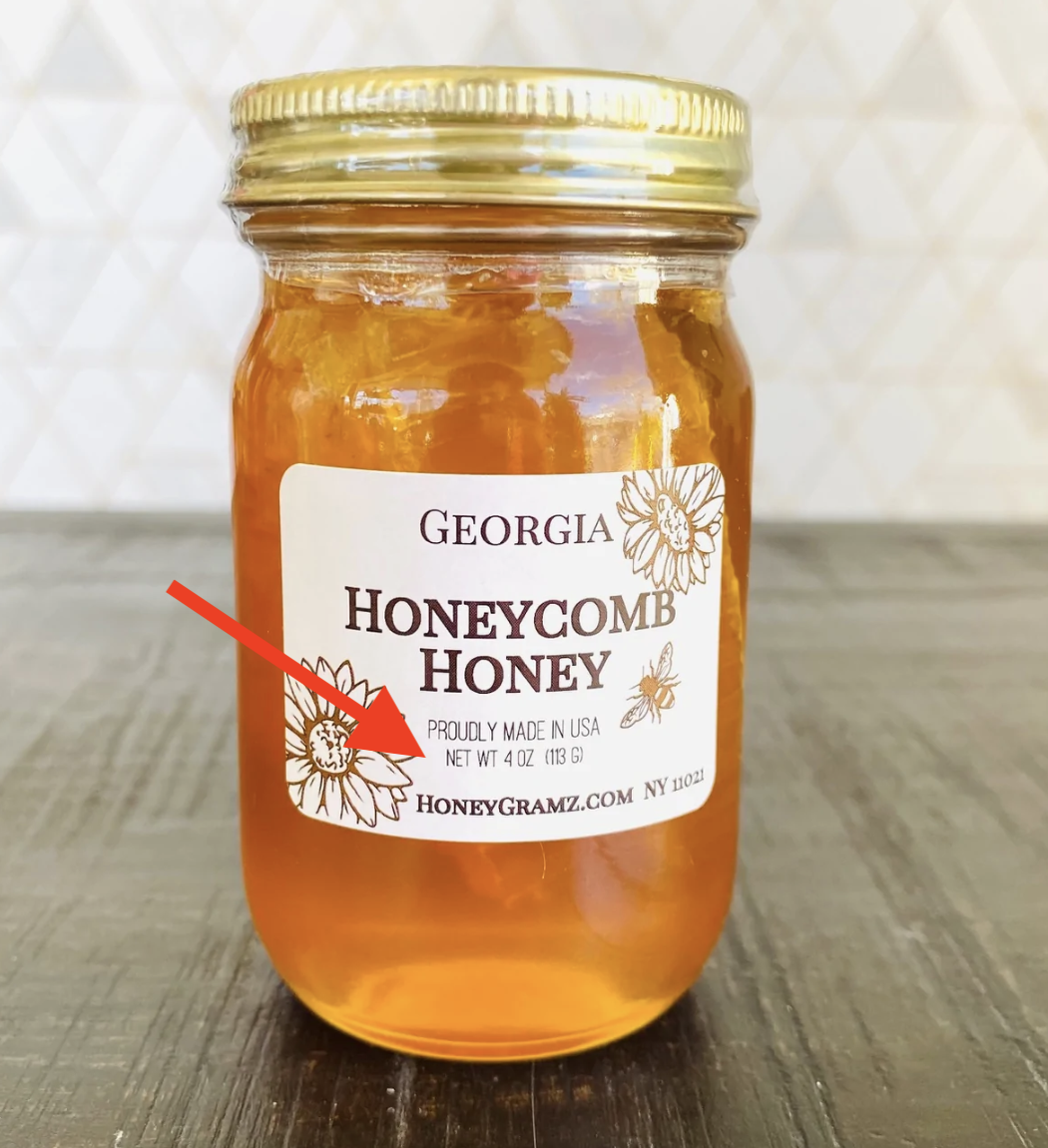
I will be traveling from Mexico April 25th. Will I be able to bring back a bottle of Tequila in my check in luggage probably wrapped safely? Thanks, Regina Green
The above is good detail but how about:
electric shaver and charger
electric toothbrush
Yes and yes!
Check these out:
https://www.uponarriving.com/tsa-rules-razors/
https://www.uponarriving.com/tsa-toothpaste/
I will be leaving Chicago going to Manila via Istanbul on 21 July 2022, Turkish Airways. I will be bringing 4 bottles of Scotch whiskey in original container, unopened and sealed and properly packed with bubble wrap. Is this allowed?
How do I know which states allow medication‘s to be in a travel organizer, and not in their original bottles? I am flying from Philadelphia with a layover in Ireland, and finally to Paris on Aer Lingus.
Hand sanitizer rules have reverted back to the 3-1-1 guidelines.
Thanks for this update. Do you have a source on that? Couldn’t find updated info.